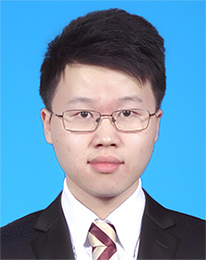

Assistant Professor (Structural Engineering)
Dr. J. Wang
BEng (First Class Honours), Tsinghua University, China
PhD, Tsinghua University, China
AMASCE, MAISC, FJSPS
Office: HW 6-04
Phone: +852 3917 2647
Fax: +852 2559 5337
E-mail: cewang@hku.hk
Homepage: https://sites.google.com/view/jiaji
Teaching Activities

- CIVL1113 Engineering Mechanics & Materials
Research Interests

- Physics-informed machine learning for intelligent structural engineering
- Data-driven and physics-informed operator learning for solving partial differential equations
- Structural health monitoring and structural control with smart material and deep learning
- Computational mechanics infusing finite element method and deep learning
- Steel and concrete composite structures
Representative Research / Consultancy Projects

- Physics-informed machine learning for bridge health monitoring, Principal investigator, sponsor: Japan Society for the Promotion of Science.
- Application of machine learning algorithms for turbulence modeling, associate project representative, sponsor: RIKEN R-CCS.
- Seismic Isolation of Embedded Foundations Using Periodic Meta-material Barriers to Create Resilient Structures, major project member, sponsor: US National Science Foundation.
- Consultancy project: Construction simulation and construction stage design for New Shougang Bridge (world first double-tower cable-stayed steel composite bridge with significant skew angle), major project member.
- Consultancy project: Experimental study for design of Yinchuan Greenland Center Complex, major project member.
Professional Activities

- Special issue: Steel-Concrete Composite Structures: Design and Construction (Buildings: due date March 31, 2023)
https://www.mdpi.com/journal/buildings/special_issues/2JV6FX5685
Selected Representative Publications

- Wang, J., Wang, C., Fan, J., & Y. L. Mo. (2022) A deep learning framework for constitutive modeling based on Temporal Convolutional Network. Journal of Computational Physics, 449, 110784.
- Wang, J., Huang, H., Zhang, B., Menq, F., Nakshatrala, K., Mo, Y., & K.H. Stokoe. (2022) Active isolation tests of metamaterial-based barriers and foundation. Engineering Structures, 260: 114253.
- Wang, J., Liu, C., Nie, X., Ding, R., & Zhu, Y. (2022) Biaxial constitutive models for simulation of low aspect ratio reinforced concrete shear walls. ASCE Journal of Engineering Mechanics, 148(2): 04021157.
- Wang, J., Liu, Y., Nie, X., & Y. L. Mo. (2021) Deep convolutional neural networks for semantic segmentation of cracks. Structural Control and Health Monitoring, e2850.
- Wang, J., Liu, C., Nie, X., Fan, J., & Zhu, Y. (2021) Nonlinear model updating algorithm for biaxial reinforced concrete constitutive models of shear walls, Journal of Building Engineering, 44, 103215.
- Wang, J., Nie, X., Bu, F., & Tao, M. (2020) Experimental study and design method of in-plane shear behavior of composite plate shear walls-concrete filled. Engineering Structures, 2020, 215, 110656.
- Wang, J., Liu, C., Fan, J., & J.F. Hajjar. (2019): Triaxial concrete constitutive model for simulation of composite plate shear wall-Concrete encased: THUC3. Journal of Structural Engineering. 145(9), 04019088.
- Wang, J., Tao, M., Fan, J., & Nie, X. (2018) Seismic behavior of steel plate reinforced concrete composite shear walls under tension-bending-shear combined cyclic load. Journal of Structural Engineering, 144(7), 04018075.
- Wang, J., Zhou, M., Fan, J., & Tao, M. (2018) Simplified design method for the shear capacity of steel plate shear-strengthened reinforced-concrete beams. ASCE Journal of Bridge Engineering, 23(11). (Editor's choice paper)
- Wang, J., Tao, M., Zhou, M., & Nie, X. (2018) Force transfer mechanism in RC beam strengthened in shear by means of steel plated concrete. Engineering Structures, 171: 56-71.
 For more information of Dr. J. Wang, please visit https://sites.google.com/view/jiaji.
For more information of Dr. J. Wang, please visit https://sites.google.com/view/jiaji.